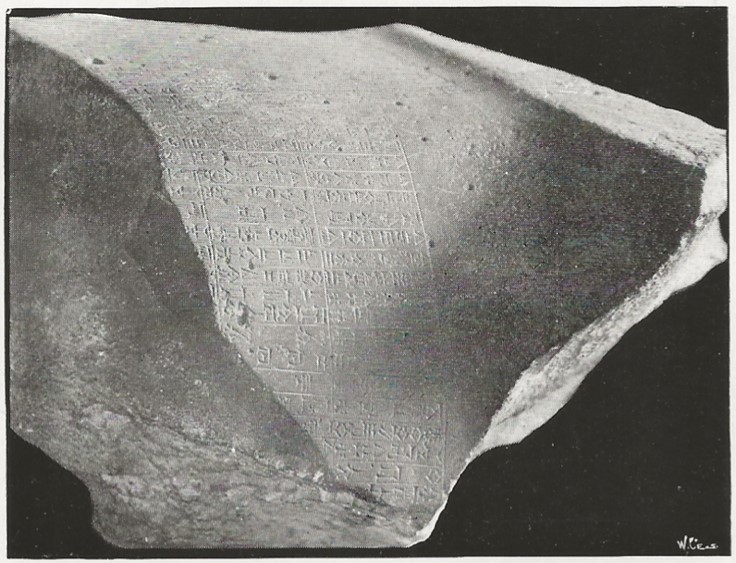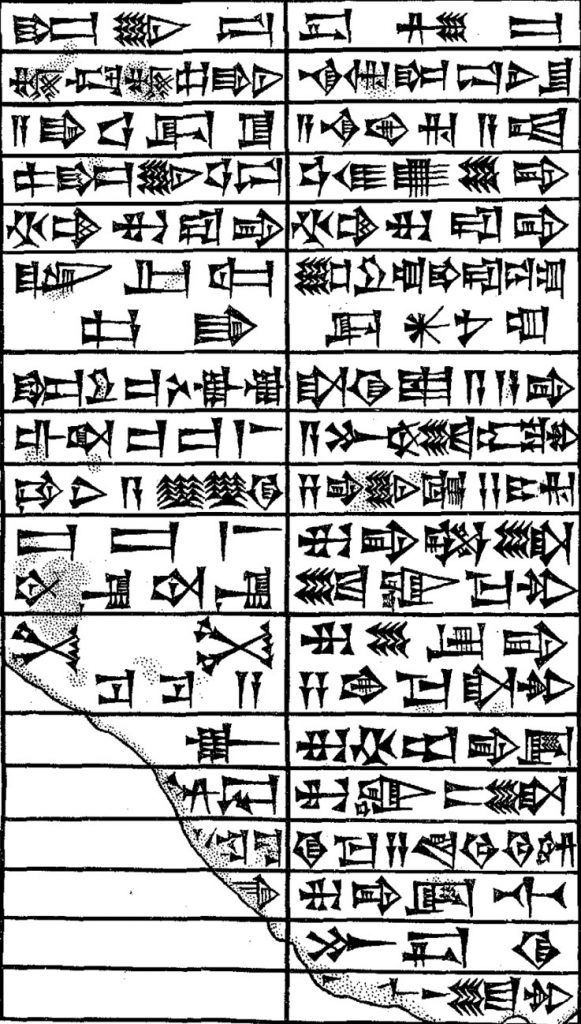Royal Hymn of Hammurabi
The following Mesopotamian poem appears on an ancient stone statue, which had suffered breaking and chipping before its modern rediscovery. Nearly all of column 3 is missing and hence cannot be included here.
| Listen to poem in Akkadian | Listen to poem in English |
Column 1 — Original Akkadian Text
enlil etelutam iddikkum atta mannam tuqa
sin asharidutam iddikkum atta mannam tuqa
ninurta kakkam tsiram iddikkum atta mannam tuqa
ishtar qablam u tahazam iddikkum atta mannam tuqa
shamash u adad rabitsuka atta mannam tuqa
Listen to poem in Sumerian
Column 2– Original Sumerian Text
namagalzu gubbib
ubdalimmuba saganshe nilbi muzu hepade
undagalla inim harabsasagene kiri shu harabtaggene
aar galgalzu metesh heiine
katarmahzu hesilline
Listen to the poem in Akkadian
Column 4– Original Akkadian Text
narbi dunishu ana ahriat umi ushepi
hammurabi
sharrum qarradum dannum
shakish aabi
abub tuqumatim
sapin mat zairi
mubelli tuqmatim
musheppi sahmashatim
mu`abbit muqtabli kima salam titim
mupitti pushqi u washtutim
Column 1– English Translation
Enlil has given you lordship–You, whom are you waiting for?
Sin has given you supremacy–You, whom are you waiting for?
Ninurta has given you a noble weapon–You, whom are you waiting for?
Ishtar has given you fight and warfare–You, whom are you waiting for?
Shamash and Adad are your sheriffs–You, whom are you waiting for?
Listen to poem in English
Column 2– English Translation
Establish your victory!
Elevate yourself in the four quarters of the world, so that your name may be mentioned!
May the numerous people pray to you! May they prostrate themselves before you!
May they praise your great praises over and over again!
May they glorify your noble glories over and over again!
Listen to the poem in English
Column 4– English Translation
The greatness of his power he caused to appear till the end of days.
Hammurabi,
The king, the mighty warrior,
The exterminator of foes,
The flood of battles,
The demolisher of the enemy’s land,
The extinguisher of battles,
Who brings disputes to an end,
The destroyer of soldiers as if they were a figurine of clay,
The one who loosens difficult distresses.
Notes
[Column 1 above reproduces the Akkadian version, which is more intact than its Sumerian counterpart. Column 2 above reproduces the Sumerian version, which is more intact than its Akkadian counterpart. Column 4 above reproduces the Akkadian version, which is more intact than its Sumerian counterpart.]
Historical Notes
Below is a photograph of columns 4A and 4B of the cuneiform inscription, accompanied by a handwritten copy. The language on the left side is Sumerian and on the right Akkadian.


The preceding bilingual hymn was composed in the 18th century BCE during the reign of Hammurabi. It was inscribed, presumably, on a lower portion of the sculpture’s royal robe. The poem begins by asking the king what help he needs, because the gods and goddesses have already pledged their support. Hammurabi goes on to receive a further series of deific approvals for future conquest by him. He eventually fulfills his mission of colonizing the land of the foe throughout the world’s four regions.
Sources
Akın, G., 2016, Kestim Kara Saçlarımı, Yapı Kredi Yayınları, İstanbul. pg.100.
Büyükbay, T. Zeynep, XII. Uluslararası Türk Sanatı, Tarihi ve Folkloru Kongresi Sanat Etkinlikleri, p.5.
Louie, E., 2019, A Woman’s Voice: Methods and Obstacles of Feminist Translation in Persian, Spanish and Turkish Poetry, A Thesis, pg. 82.
Yılmaz, E., 2016, Yalnızlık ve Kadın Bağlamında Gülten Akın’ın şiirleri, Mecmua Uluslar arası Sosyal Bilimler Dergisi, pg. 35-36.
(online) https://siirtutkusu.com/kapici-kadinlar-siiri/, Access date: 14.08.2022.
(online) https://www.siir.gen.tr/siir/g/gulten_akin/kestim_kara_saclarimi.htm, Access Date:14.08.2022.
